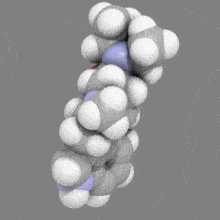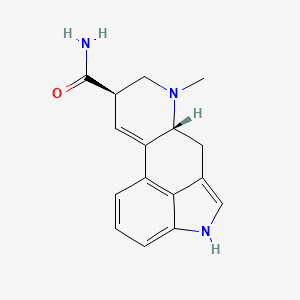Lysergic acid, also known as D-lysergic acid, is considered to be the precursor of many ergot alkaloids produced by ergot fungi and is also present in the seeds of Turbina Corymbosa, Ipomoea Tricolor, and Argyreia Nervosa. These plants are commonly called ololiuhqui, morning glory, and Hawaiian baby Woodrose respectively. Lysergic acid or lysergic amide is used as medicine and as a psychedelic drug (LSD).

Lysergamides are often used to treat allergies and various other ailments associated with the overactivity of the immune system. When Lysergamides are given, the symptoms are relieved and the body is restored to a more balanced state. They are usually substituted for antineoplastic or cytotoxic agents, but can also be added to chemotherapy treatment. Here we will discuss the use of Lysergamides to treat schizophrenia and tryptamine substances in further detail.
The Primary Purpose of Lysergamides.
The primary action of Lysergamides is to decrease the level of dopamine in the brain. In effect, Lysergamides act as inhibitors or partial mimetics of phenethylamine. The effect of Lysergamides is again divided into two categories. The first is that of a psychotropic compound, the second is that of a metabolism suppressant.
What is Schizophrenia?
Schizophrenia is a chronic brain disease that affects less than 1% of the American population. When schizophrenia is active, symptoms may include delusions, hallucinations, speech confusion, difficulty thinking, and lack of motivation. However, with treatment, most symptoms of schizophrenia will be greatly improved, and the possibility of recurrence will also be reduced (1)(2).
The use of Lysergamides to treat schizophrenia is based on the hypothesis that Lysergamides reduce the Serotonin concentration in patients suffering from schizophrenia. This was found by carrying out a study where a large group of schizophrenic patients were treated with either lysergic or non-lysergic Lysergamides (such as l-lysine hydrochloride). The results showed that the proportion of patients that developed anorexia was much higher for those treated with Lysergamides compared to those treated with placebo. It was also found that the weight loss caused by Lysergamides was significantly more than that caused by the placebo. Furthermore, it was found that Lysergamides significantly augmented the density of brain serotonin receptors throughout the brain.
Lysergamides With Other Related Conditions

Lysergamides belong to the class of chemicals known as psychedelics and have been used extensively for the treatment of psychosis, especially schizophrenia. Recently, some studies showed that Lysergamides can also be useful in the treatment of non-psigmaddic depression. Lysergamides stimulate the secretion of lysine hydroxide, which in turn increases the levels of serotonin in the brain. In addition to this effect, Lysergamides also increase the clearance rate of glutamate and N-methyl D-Aspartate (NMD) in the brain, thus improving the symptoms of Parkinson’s disease. Although further studies are needed to support the use of Lysergamides in the treatment of schizophrenia, these studies so far seem to suggest that Lysergamides might be effective in treating some psychotic disorders like schizophrenia.
Lysergamides and L-betonicine
Currently, there is no approved drug that combines the actions of Lysergamides with that of L-betonicine. However, a number of natural supplements are being manufactured to produce a synergistic therapeutic effect between Lysergamides and L-betonicine. These supplements are commonly known as L-carnitine and contain a different set of amino acids, rather than l-lysine, as in Lysergamides. Some natural supplements also contain a chemical, called carnosine, which works in conjunction with L-lysine, to enhance its therapeutic effects. This natural substance is believed to also increase the level of dopamine in the body, enhancing mood and increasing endurance.
Lysergamides and Tryptaminess
Recently, the use of some chemical compounds like tryptamines has been proposed as another alternative to treat people who suffer from schizophrenia. Tryptamines are present in the body in very low concentrations and appear to work in a similar way to the effect of L-carnitine, enhancing alertness and stimulating mental function. Although further studies are needed to verify these claims, it is clear that using these natural substances to improve the mental status of people who suffer from schizophrenia would be a welcome development.
The future of Lysergamides and tryptamines looks very bright in treating schizophrenia. Many new studies, however, need to be conducted to confirm the effectiveness of these substances in treating schizophrenia. Currently, they appear to be more effective in relieving the symptoms of L-dopa, compared to some of the other chemical compounds used in the treatment of L-dopa. In addition, it is not known whether these substances affect serotonin levels in the brain, causing hallucinations or otherwise affecting the brain functions related to consciousness. Some Lysergamides have been reported to cause agitation, depression, diarrhea, and vomiting in some patients. This was also accompanied by severe weight loss in most patients.
- Ibogaine: Exploring the Potential and Perils of a Psychedelic Therapy
- Behavioral Therapy: All You Need To Know About Behavioral Therapy
- Substance Use Disorders: Understanding the Science, Risks, and Recovery
- Cognitive Behavioral Therapy (CBT): Unveiling the Depths of a Transformative Approach
- Mescaline: Exploring the Science, History, and Therapeutic Potentials


Recent Comments